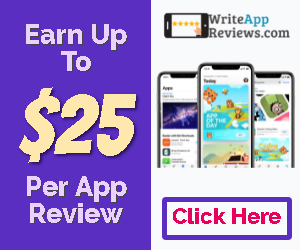Mastering the Art of Writing App Reviews: A Comprehensive Guide
Writing app reviews is a vital skill for anyone interested in the tech world or app development. With millions of applications available on various platforms, quality reviews can make or break an app’s success. A well-crafted review not only helps users make informed decisions but also aids developers in understanding what works and what doesn’t. In this article, we’ll explore how to write engaging, insightful app reviews that resonate with both users and developers.
Understanding the Purpose of an App Review
The primary purpose of an app review is to share genuine user experiences, offering insights into the app’s functionality, performance, and overall value. A good review strikes a balance between subjective opinions and objective facts. It serves as a guide for potential users, allowing them to gauge whether the app meets their needs.
Furthermore, a well-structured app review can contribute to the app’s visibility on app stores. Search engines favor applications with comprehensive feedback, which can lead to higher rankings and increased downloads. Thus, writers must understand their audience and what they seek when reading reviews. Are they looking for functionality, ease of use, design, or customer support? Knowing this can shape how one approaches writing a review.
Structuring Your App Review Effectively
A clear structure enhances readability and engagement, making it easier for users to find the information they need. Here’s a simple yet effective format for app reviews:
- Introduction: Briefly introduce the app, including its developer and purpose.
- Features: Discuss the main features of the app, highlighting what makes it unique.
- Usability: Evaluate the user interface (UI) and user experience (UX).
- Performance: Analyze how well the app functions—speed, crashes, and bugs.
- Conclusion: Summarize your thoughts and recommend the app to specific user groups.
By adhering to this structure, readers can easily digest information. For instance, when reviewing a fitness app, your introduction could explain the app’s main goals, while your features section can detail its workout trackers, calorie counters, and community support options.
Providing Honest and Constructive Feedback
Honesty is crucial in writing app reviews. Users value transparency, and developers benefit from constructive criticism. When expressing your thoughts, it’s important to be specific about what you liked and what could be improved. Instead of saying, “The app crashed often,” consider providing context: “During my testing of the app, I experienced crashes while attempting to upload photos, which occurred three times.” This level of detail not only informs other users but also aids developers in pinpointing areas for improvement.
Moreover, while it’s easy to focus on negatives, it’s equally critical to acknowledge the app’s strengths. For example, if an app has a well-designed interface but lacks certain functionalities, highlight that contrast. This balanced approach helps readers appreciate the positives while being aware of the shortcomings.
Incorporating Visuals and Practical Examples
Enhancing your app review with visuals can make it more engaging and informative. Screenshots of the app in action, for instance, offer users a visual representation of the user interface and key features. If the app includes unique functionalities, consider creating short video demonstrations to illustrate these features in real-time.
Additionally, practical examples of how the app performs in real-world scenarios can bolster your review. Instead of just stating that a navigation app is accurate, share your experience using it on a specific road trip. Explain how it guided you through traffic and any challenges you encountered. This narrative approach will resonate more with readers, making your review stand out.
Optimizing Your App Review for Search Engines
To ensure that your app review reaches a wider audience, it’s essential to optimize it for search engines. Start by researching keywords related to the app you’re reviewing, including its name, genre, and features. Incorporate these keywords naturally throughout your article—especially in the title, headings, and introductory paragraphs—to improve your chances of ranking well in search results.
Moreover, utilizing relevant tags and meta descriptions can enhance visibility. For example, use tags like “app review,” “mobile apps,” and “user experience.” Craft a compelling meta description that summarizes your review, enticing potential readers to click on your link. Remember, the more discoverable your review, the more opportunities it has to help users and developers alike!
Conclusion
Writing app reviews is an important task that can influence both users and developers significantly. By understanding the purpose of reviews, structuring them effectively, providing honest feedback, incorporating visuals, and optimizing for search engines, you can create compelling content that stands out in a crowded market. Remember, the goal is to inform, engage, and assist users in finding the right apps for their needs. So, whether you’re reviewing a productivity tool or a gaming app, keep these strategies in mind to maximize your impact.
FAQs
How long should an app review be?
An ideal app review should be between 500 to 1,000 words. This length allows for a thorough exploration of the app while maintaining reader engagement.
Should I include personal experiences in my app review?
Yes, personal experiences enrich your review and provide context, helping readers relate to your perspective. Including practical examples makes your insights more valuable.
Can I review apps for which I received incentives?
While it is permissible, it’s essential to disclose any incentives you received. Transparency increases trust with your audience and reflects ethical writing practices.



